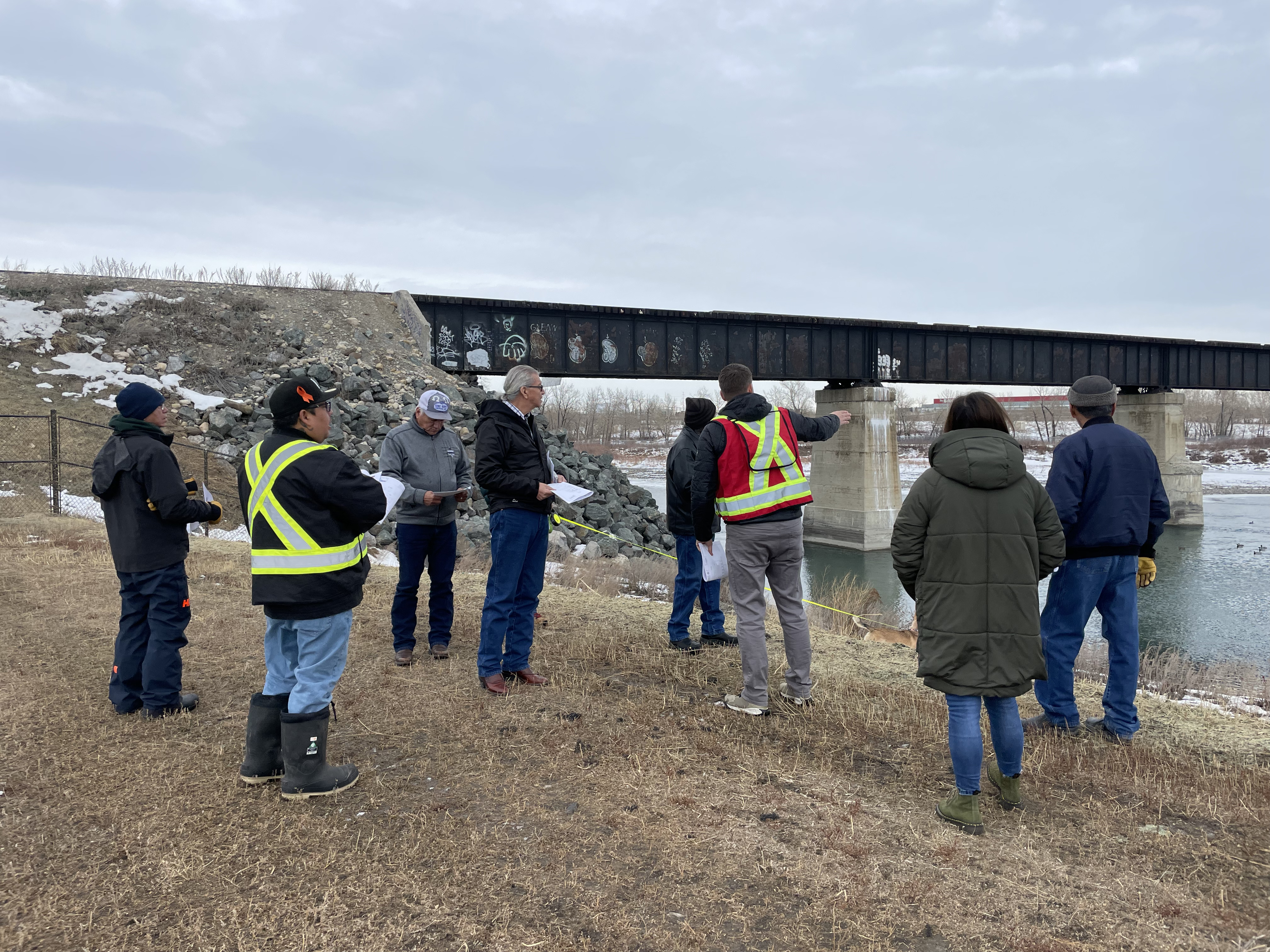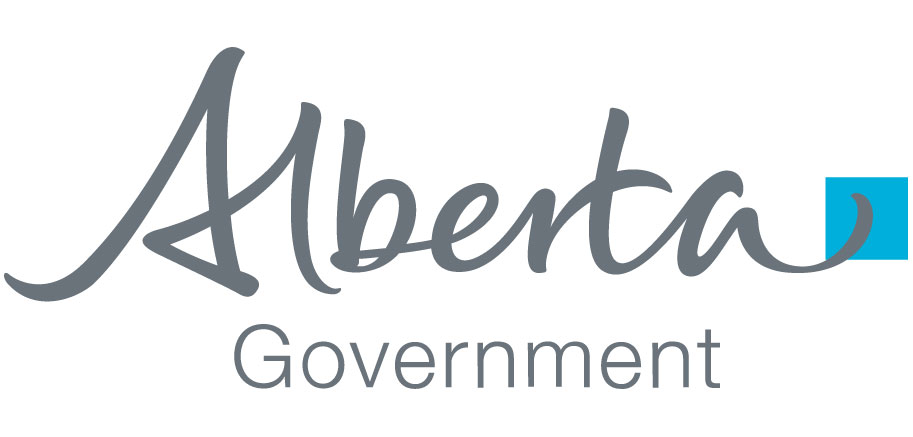Indigenous engagement
Consultation Officers and Elders from the Blackfoot Confederacy Nations at South Bow River crossing during 2022 consultation.
The Green Line is being developed during an important time of Truth and Reconciliation for our country and city. Green Line acknowledges Indigenous history and the ongoing effects of colonization and believes the project can be emblematic of reconciliation.
As a major municipal transit project that crosses the traditional lands of Indigenous communities, Green Line is proud to work with the Siksika Nation, Piikani Nation, Kainai Nation, the Îethka Nakoda Wîcastabi Nation comprised of the Chiniki, Bearspaw, and Goodstoney Bands, the Tsuut’ina Nation, and the Otipemisiwak Métis Calgary Districts of Nose Hill and Elbow.
We are committed to advancing Truth and Reconciliation with and for Indigenous peoples, businesses, and communities. That commitment is reflected in our approach to consultation and ongoing engagement. We engage in meaningful dialogue, actively listen to community perspectives, and incorporate Indigenous requests for Phase 1 of Green Line that have come through consultation.
Green Line is committed to advancing the following recommendations in the White Goose Flying Report:
- Support and develop awareness training for staff.
- Support public awareness.
- Recognize the value of healing practices by seeking public land, buildings and infrastructure for Indigenous ceremonial, cultural, commemorative, and healing activities.
- Acknowledge and respect Calgary's Indigenous archaeological sites.
- Create collaborative art that contributes to reconciliation.

Indigenous consultation
The Green Line team meets regularly with each Treaty 7 Nation as well as the Métis to build relations, keep Nations informed on progress and work through understanding and support for requests made through consultation.
| Dates | Consultation |
|---|---|
| 2016 – 2017 | The City of Calgary initiated engagement for the south leg of the Green Line with Treaty 7 groups. |
| 2016 – 2017 |
Provincially required consultation of St. Dunstan Indian Anglican Industrial School with Tsuut’ina Nation, Kainai/Blood Tribe, Piikani Nation, and Siksika Nation. |
| 2018 – 2019 |
Federally required consultation for the Maintenance and Storage Facility with 21 Indigenous groups resulted in eight responses and six engagements with the Kainai/Blood Tribe, Montana First Nation, Erminskine Tribe, Métis Nation of Alberta – Region 3, Siksika Nation and Samson Cree. |
| 2022 – 2023 |
Provincially required consultation initiated for the Elbow River crossing and south Bow River crossing for Treaty 7. |
No objections have been received through consultation to date, but requests put forward by Indigenous groups through the process continue to guide priorities for engagement and collaborative work. These efforts are ongoing and have begun to develop pathways to support ceremony, construction monitoring, cultural training, traditional plantings and harvesting, and contracting.


Traditional plantings
Green Line has committed to prioritizing traditional Indigenous plantings to support reclamation of the natural environment within the project boundaries. Through consultation, Nations indicated their interest in land remediation and landscaping, and how Indigenous ways of knowing could be incorporated.
Green Line is working with Nation identified Elders or Knowledge Holders to undertake a biophysical assessment of construction areas identified for Green Line Phase 1. The goal is to create a list of plant species of interest recommended for the Calgary context and specific topographies. Green Line is also supporting the request from Indigenous communities to harvest in advance of construction where there are species of interest.
Indigenous Construction Monitoring Program
Construction monitoring is a common request from Indigenous communities for projects in proximity to culturally significant areas. Green Line received requests during consultations to have Indigenous monitors on site during construction in culturally significant areas to assist in protecting unknown historical resources.
The intent is to observe how the land is impacted by construction and watch for any artifacts that may be uncovered. Individuals unfamiliar with Indigenous culture, or have not been trained to identifying such resources, may not notice or properly identify resources.
Green Line’s Indigenous Construction Monitoring program was established through work with all Treaty 7 Nations and the Métis and will create an environment that allows Indigenous peoples to participate meaningfully in oversight. It also enhances the project team’s awareness and understanding of the diversity of Indigenous traditional land use, sacred sites and historical knowledge. The program will facilitate inclusion of Indigenous perspectives and respect for Indigenous culture and history in the decision-making process should there be chance finds.
Indigenous Construction Monitoring for Phase 1 of Green Line will occur alongside archaeological monitoring at the South Bow River Crossing, Elbow River Crossing, and Maintenance and Storage Facility construction areas.



